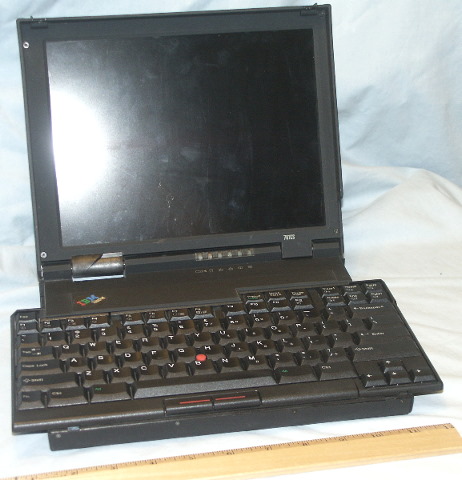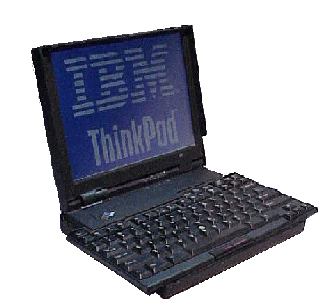|
IBM Thinkpad 701CS, aka "Butterfly" |
|||||||||||
|
 This is what it looks like. The ruler will give you an idea of how small this puppy is. The outside dimensions are just about the same as the 500, but then you open it up and there's the keyboard! |
||||||||||
|
Ever see a computer that has a "WOW!" factor in it? You know,
something that's so far removed from the ordinary that when you see it
you've just got to say, "WOW!"? The 701CS is that sort of
computer. I mean, how many computers do you know that are displayed in the New York Museum of Modern Art? Just the "Butterfly." The 701 series was built with very little compromise. A good size screen (for the time), light weight (4.5 pounds) a solid processor, ample amount of memory, AND a FULL SIZE KEYBOARD!!!! The 701C has a TFT LCD screen while the CS got a supertwist LCD. Otherwise, the 2 are the same. |
|||||||||||
|
The keyboard was conceived when one of the designers was putting a puzzle together with his daughter and it just hit him that if you split the keyboard in such a way that it would fold up when you closed it, you could get a much larger keyboard than was ordinarily possible. And thus was a legend born. Of course, with the advent of extra-wide screens, the Butterfly keyboard is superfluous and thus it went away. And yes, I know that technically, this isn't an "antique" computer, but it just has that COOL factor oozing out of it! By the way, this particular unit is a Frankenstein of sorts. It's actually made from 2 units. One had a bad keyboard and the other had a bad motherboard. I tell you what, taking this little beauty is a bit of a challenge. For instance, have you ever had to work with Torx T1 screws? It was even quite challenging for my bifocals! |
|||||||||||
 This picture is NOT of my unit, but it shows how the keyboard opens and closes. Saved me reinventing the wheel |
|||||||||||